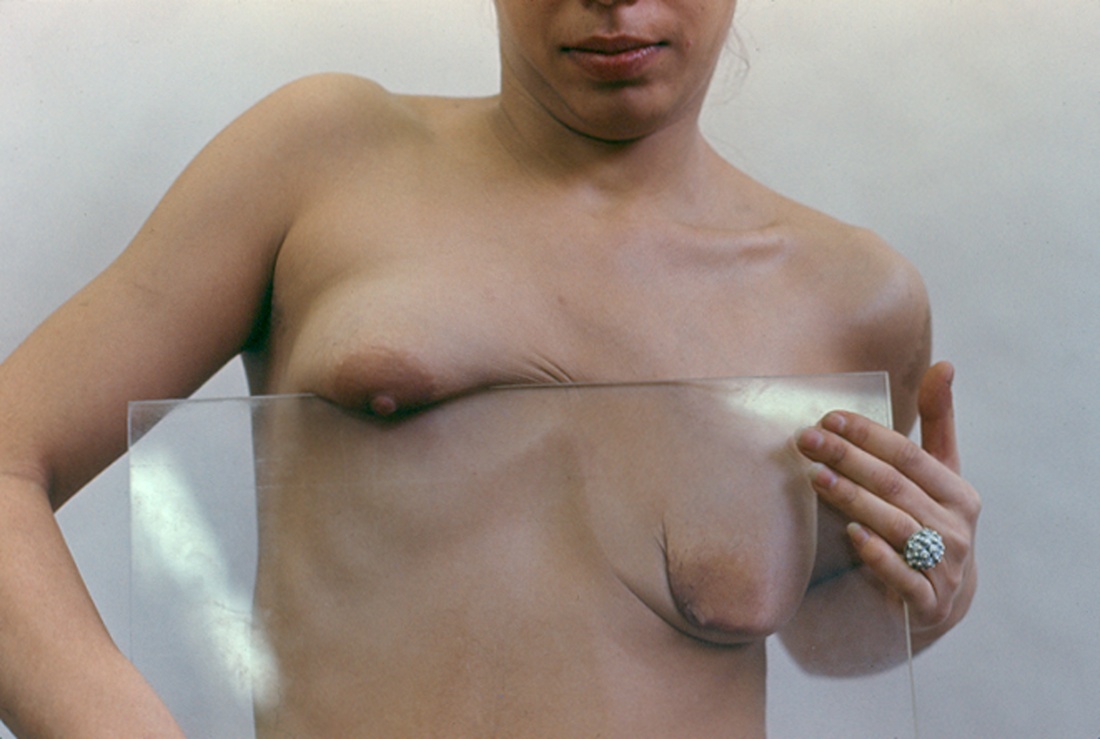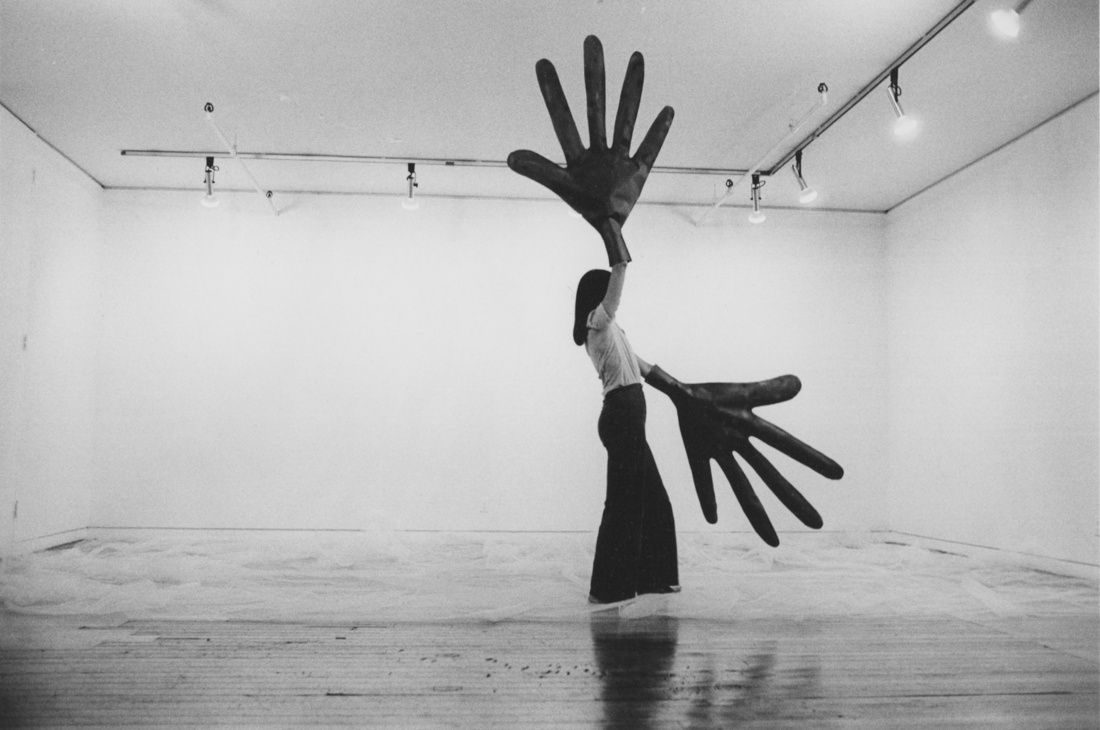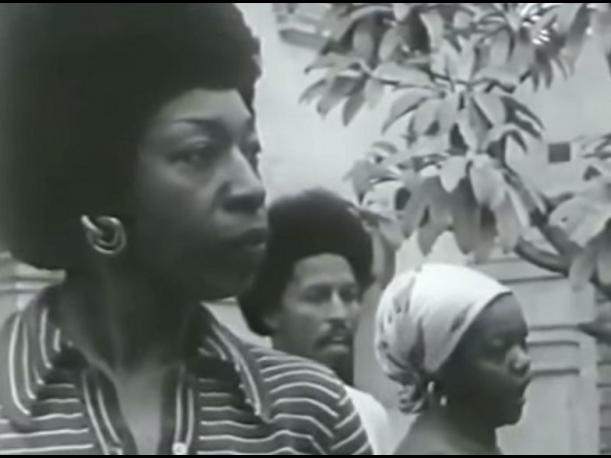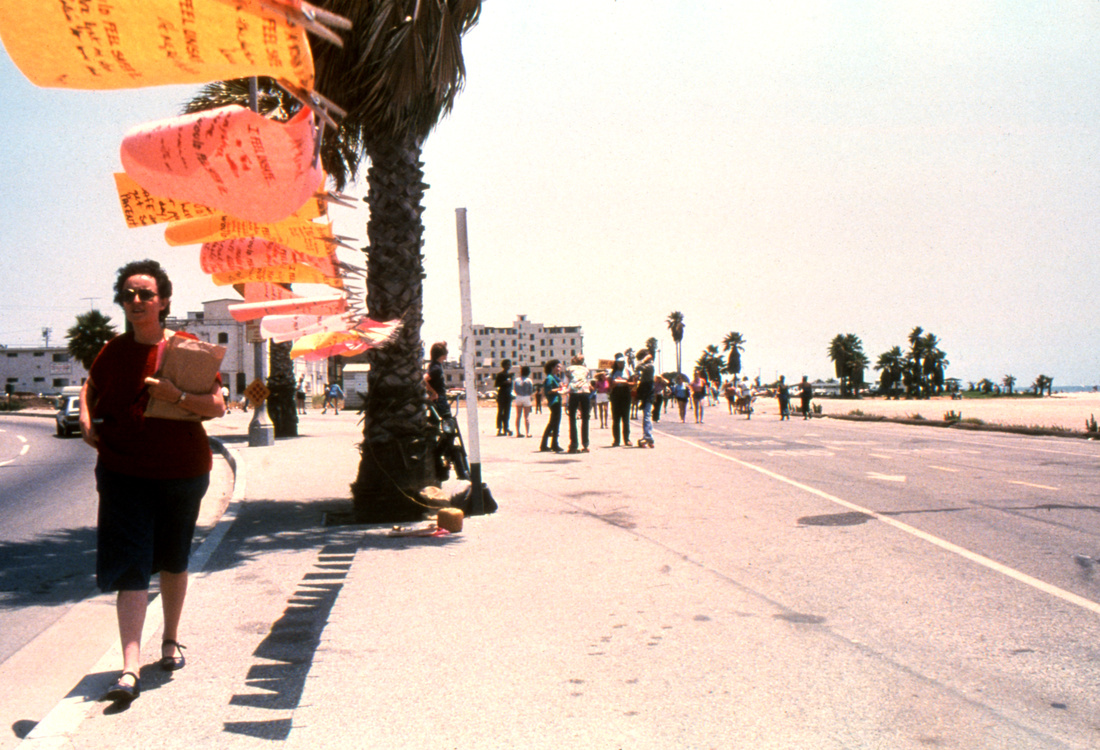The Latin American Women Artists Who Fought Patriarchy with Their Bodies
 Ana Mendieta, Untitled (Glass on Body Imprints), 1972. Courtesy of the Estate of Ana Mendieta Collection, LLC, and Galerie Lelong, NY.
Ana Mendieta, Untitled (Glass on Body Imprints), 1972. Courtesy of the Estate of Ana Mendieta Collection, LLC, and Galerie Lelong, NY.
In the decades following 1960, the dictatorships and authoritarian regimes dominating most of Latin America reinforced the dependent role of women, while institutionalizing inequality. Within this context, the human body took center stage for many female artists. Their experimental works—often favoring video, photography, and performance—introduced a shift in representations of the female form, while questioning patriarchal structures and regional politics.
Despite this, few of these artists would have referred to their work as “feminist.” Instead of a desire to advocate for women, their sensibilities were heavily shaped by the revolutionary struggle and the widespread resistance of their respective countries—even if their works did reflect a repertoire of issues addressed by feminism, such as motherhood, civil rights, and sexual violence.
“Many of these artists were active in left-wing movements,” explains Cecilia Fajardo-Hill, co-curator of the exhibition “Radical Women: Latin American Art, 1960–1985” at the Hammer Museum in Los Angeles. “But for them, the rights of women were secondary, and the Left considered that feminism was bourgeois and imperialistic.”
 Sylvia Palacios Whitman, Passing Through, Sonnabend Gallery, 1977. Courtesy of Babette Mangolte and BROADWAY 1602 HARLEM, New York.
Sylvia Palacios Whitman, Passing Through, Sonnabend Gallery, 1977. Courtesy of Babette Mangolte and BROADWAY 1602 HARLEM, New York.
“Radical Women” is part of “Pacific Standard Time: LA / LA,” the city-wide celebration of Latin American and Latinx art. Featuring over 100 artists from 15 countries, the show was born out of an ambition to provide a more complex history of the region. Curators Fajardo-Hill and Andrea Giunta have examined the notion of the political body through highlighting the works of familiar artists like Lygia Pape, Ana Mendieta, and Beatriz González, as well as a host of unclassifiable, lesser-known names, like the Cuban-born Zilia Sánchez, the Colombian sculptor Feliza Bursztyn, and the New York-born Puerto Rican photographer Sophie Rivera.
“The works of these women contribute to making visible the potentiality of the body, and how you can reframe the notion of the body,” says Giunta, gesturing to photographic works by Mendieta from 1972. In the pictures, the Cuban-born artist is seen pressing different parts of her body against a glass pane, morphing the canonical idea of the feminine body into grotesque or unnatural states. “It has to do with emancipation,” Giunta continues, “and the reconceptualization of the body, which is a political process.”
 Ana Mendieta, Rape Scene, 1973. Courtesy of the Estate of Ana Mendieta Collection, LLC, and Galerie Lelong, NY.
Ana Mendieta, Rape Scene, 1973. Courtesy of the Estate of Ana Mendieta Collection, LLC, and Galerie Lelong, NY. Sonia Gutiérrez, Y con unos lazos me izaron (And they lifted me up with a rope), 1977. Museo de Arte Moderno La Tertulia, Cali, Colombia. © Sonia Gutiérrez. Courtesy of the artist.
Sonia Gutiérrez, Y con unos lazos me izaron (And they lifted me up with a rope), 1977. Museo de Arte Moderno La Tertulia, Cali, Colombia. © Sonia Gutiérrez. Courtesy of the artist.
In another poignant work by Mendieta, Untitled (Rape Scene) (1973),comprising five color photographs, we see the artist bent abjectly over a desk, with blood dripping down her buttocks and thighs. Originally staged as a performance, the confrontational work was a response to a fatal rape that had taken place at the University of Iowa, where Mendieta studied. By recreating the aftermath of a violent assault, the artist represents defenselessness and invites the viewer to take a stand.
Violence is also palpable in the paintings of Sonia Gutiérrez, which denounce acts of torture, picturing anonymous bodies bound in ropes and bonds of fabric. Using thick contours filled in with flat color fields, her vision of Pop Art opposes the banality of the message (an approach that is not dissimilar to that of Beatriz González). Nearby, three black-and-white self-portraits from 1974 show the Italian-Brazilian artist Anna Maria Maiolino attempting to cut off her own tongue and nose, hinting at the omnipresent violence in Brazil during the dictatorship (1964–85). (Maiolino also currently has a retrospective up at MOCA, Los Angeles.)
Issues of race and ethnicity are most striking in a video by Victoria Santa Cruz. A leading figure of Afro-Peruvian culture, this choreographer, composer and activist started the first black theater company in Peru, in the late 1950s. “Negra! Negra! Negra!” shouts the troupe of musicians in the background of Me Gritaron Negra (1978), while she recounts becoming aware of her skin color as a child. This poem went on to become a hymn of empowerment across the continent.
 Victoria Santa Cruz, Me gritaron negra (They shouted black at me), 1978. Video documentation of performance, excerpted from the documentary Victoria - Black and Woman (1978). Courtesy of OTA-Odin Teatret Archives and the Hammer Museum.
Victoria Santa Cruz, Me gritaron negra (They shouted black at me), 1978. Video documentation of performance, excerpted from the documentary Victoria - Black and Woman (1978). Courtesy of OTA-Odin Teatret Archives and the Hammer Museum.
Where the majority of these artists did not set out to make feminist works, those working in Mexico (which wasn’t immersed in a dictatorship) were exceptions. Mexico’s feminist art movement emerged in the late 1970s, led by the likes of Mónica Mayer, Maris Bustamante, and Magali Lara.
“There were many artists who presented feminist works,” explains Mayer, who studied at the Woman’s Building in Los Angeles with Suzanne Lacy and Leslie Labowitz-Starus. “We organized many exhibitions, wrote and published magazines.…I think that’s why we were seen as more organized.”
In 1983, Mayer and Bustamante started the first feminist art collective in Mexico: Polvo de Gallina Negra (“Black Hen Powder”). For 10 years, the pair produced experimental and subversive works questioning the role of women in Mexican society, their image in mass media, and the impact of machismo. In the video Madre por un día (1987), they appear on the national television program Nuestro Mundo, persuading celebrity presenter Guillermo Ochoa to don their set of aprons and prop pregnant-bellies to take part in the female experience.
Beyond Latin America, crucial to this dialogue are the Chicana and Latina artists who were working in the United States at the time. “Usually the Latin American and the Latina / Chicana art worlds are kept separate, which is an artificial, colonial construct,” Fajardo-Hill argues. “Latina and Chicana artists were responding not only to patriarchal politics that were as oppressive as those faced by their counterparts in Latin America, but also to a second-wave feminism that was often indifferent to the issues faced by women of color.”
 Mónica Mayer, El tendedero (The clothesline), 1979. Courtesy of Mónica Mayer.
Mónica Mayer, El tendedero (The clothesline), 1979. Courtesy of Mónica Mayer.
Among those featured in “Radical Women” are artist and activist Judith F. Baca, a central figure of the Chicano art movement, who was responsible for the Great Walls of Los Angeles murals (begun in 1974); the Chilean-American performance artist Sylvia Palacios Whitman, a pioneer of performance art in 1970s New York, best known for donning giant green hands; and the relatively unknown Bronx-born photographer Sophie Rivera, whose black-and-white pictures document the lives of Puerto Rican, working-class communities of New York.
At a time when Latin America is facing an increasing rate of femicide, and the United States are observing some of the most repressive immigration policies in decades, the teachings of these artists are critical.
“When you see that these women are being empowered, that they’re present, and they’re saying important things—these are important references for the next generation,” Fajardo-Hill notes, and adds that women still only make up around 30 percent of artists represented in galleries and museums. “We need to move forward not by excluding, but by including all these voices.”
—Benoît Loiseau

No comments:
Post a Comment